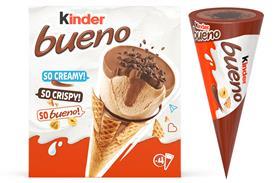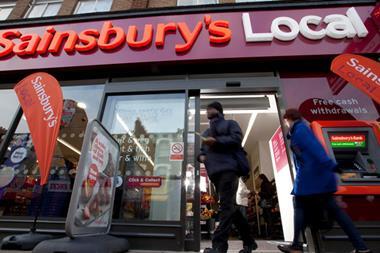In response to Adam Leyland's column on front-of-pack labelling (The Grocer, 13 January, p3), Sainsbury's has been running the Food Standards Agency's traffic light system in the form of the 'Wheel of Health' for two years.
We base our criteria on portion sizes or 100g, whichever is most appropriate for the product.
Using your example of a bar of Sainsbury's dark fruit and nut, the colour coding is based on a portion size of four squares of chocolate.
We believe in being transparent and telling consumers what level of nutrients are in the product. We work out the amounts based on both the portion size and 100g and put the worst-case scenario on the label so customers have the most honest interpretation.
The colour coding takes into account what food it is and the part it plays in diet. For example, chocolate will play a smaller part than a ready meal. It's not a 'hazard warning system that runs contrary to the data inside'.
The important thing here is that difficult calculations go on behind the scenes so consumers have a simple to understand system that can help them make choices at a glance.
Guideline Daily Amounts have been on packaging for years and do provide useful information for shoppers - but generally when they get home. While debate is helpful, research is consistently proving that multiple traffic-light labelling is preferred by consumers. What will stop confusing Jo Public is to give consumers what they have said they want - one system and that system, according to research such as YouGov, is a traffic-light system.
Independent research by Which? has shown GDA labelling alone is not as effective when it comes to communicating vital information and 90% of people find the traffic-light system easier to understand.
Consumers have already chosen - but many are choosing not to hear.
We base our criteria on portion sizes or 100g, whichever is most appropriate for the product.
Using your example of a bar of Sainsbury's dark fruit and nut, the colour coding is based on a portion size of four squares of chocolate.
We believe in being transparent and telling consumers what level of nutrients are in the product. We work out the amounts based on both the portion size and 100g and put the worst-case scenario on the label so customers have the most honest interpretation.
The colour coding takes into account what food it is and the part it plays in diet. For example, chocolate will play a smaller part than a ready meal. It's not a 'hazard warning system that runs contrary to the data inside'.
The important thing here is that difficult calculations go on behind the scenes so consumers have a simple to understand system that can help them make choices at a glance.
Guideline Daily Amounts have been on packaging for years and do provide useful information for shoppers - but generally when they get home. While debate is helpful, research is consistently proving that multiple traffic-light labelling is preferred by consumers. What will stop confusing Jo Public is to give consumers what they have said they want - one system and that system, according to research such as YouGov, is a traffic-light system.
Independent research by Which? has shown GDA labelling alone is not as effective when it comes to communicating vital information and 90% of people find the traffic-light system easier to understand.
Consumers have already chosen - but many are choosing not to hear.

















No comments yet